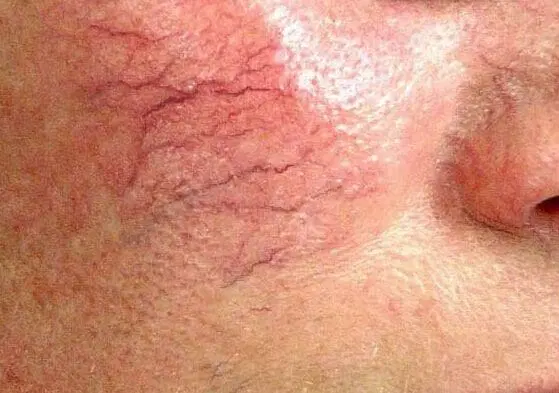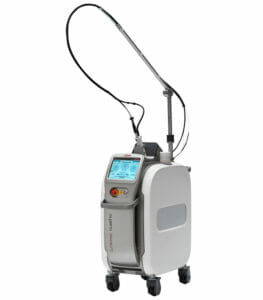People use the term “skin tag” to refer to lots of things on the skin that they simply want removed. For any of these lesions, you need to first have them evaluated by an expert to make sure they are benign, meaning not cancer or any kind of precursor to cancer. If there is any chance the skin lesion is cancer then it needs to be removed carefully by a surgeon to make sure the entire lesion is evaluated, removed and treated properly. However, if a lesion is a classic benign finding, then it can often be removed simply and safely without surgery.
Many skin tags are what we call “pedunculated.” This means they are hanging off the skin from a thin stalk. People often get these little tags around the armpits. If the skin tag is flesh colored and hanging from a stalk, there are several ways to remove it. You can do this with a sterile scissors or scalpel, followed by a topical treatment to stop any bleeding. Alternatively, many offices can remove these with a cautery device. This is convenient because this can also be used to prevent or stop any bleeding. There is no need for a laser for this kind of skin tag.
As mentioned above, lots of people use the terms “spot” or “skin tag”, and they might be referring to many different things on the skin. The following are some lesions we can easily treat without surgery:
A sun spot is a dark, slightly raised area on the skin that is usually caused by sun exposure. Facial sun spots are particularly common on the cheeks, forehead, nose and chin – areas of the face that are most exposed to the sun. Sun spots can also occur on other parts of the body that are regularly exposed to sunlight, such as the arms, chest and legs.

Spider veins, also called telangiectasias, are small dilated blood vessels that occur close to the surface of the skin. They are usually red, blue or purple in color and are most commonly found on the legs and face. Spider veins are generally harmless but can be cosmetically displeasing. In some cases, they may also cause pain or other symptoms.

Cherry angiomas, also known as cherry hemangiomas, are small, bright red growths that occur on the skin. They are made up of a cluster of dilated blood vessels and usually appear on the trunk, face, neck or scalp. Cherry angiomas are benign (non-cancerous) growths that do not usually cause any symptoms. However, they may be cosmetically undesirable for some people. In rare cases, they may bleed or become irritated.

Milia are small, white bumps that typically appear on the face. They are most common in newborns and young children, but can also occur in adults. Milia are benign (non-cancerous) growths that do not usually have any symptoms. Milia typically disappear on their own within a few weeks to a few months. In rare cases, they may require treatment.

Cholesterol deposits are small, white bumps that can form on the skin. They are made up of cholesterol and other fats that accumulate under the skin. Cholesterol deposits are not harmful and do not typically cause any symptoms. However, they can sometimes become irritated or infected.


For many of these lesions, the safest and simplest (and least expensive!) way to remove them is with a low-level cautery device. At Glow Medispa, we use the Thermo-Lo (also called Thermo-Clear) device.
Thermo-Lo is a device that generates radiofrequency current that is attracted to the water in various skin conditions. It uses a tiny probe on or just under the surface of the skin to dehydrate the problem area, causing the body (over a few days) to exfoliate the dried skin that removes and clears the skin of the condition. Thermo-Lo technology stays on the top layers of skin, the epidermis. The procedure is minimally invasive, is virtually painless and requires very little down time.

For some lesions, we use the Clarity II Laser. The Clarity II is a powerful dual-wavelength laser that can be used to target sun spots, cherry angiomas, dilated vessels (telangiectasias) and many more types of lesions. Learn more about the clarity II laser here.
Spot / skin tag removal is available at both our West Seattle and Kirkland / Eastside locations. You can book a consultation online or call us for fill out our contact form here and we will contact you.
contact us
Web design and development by Thrive Design